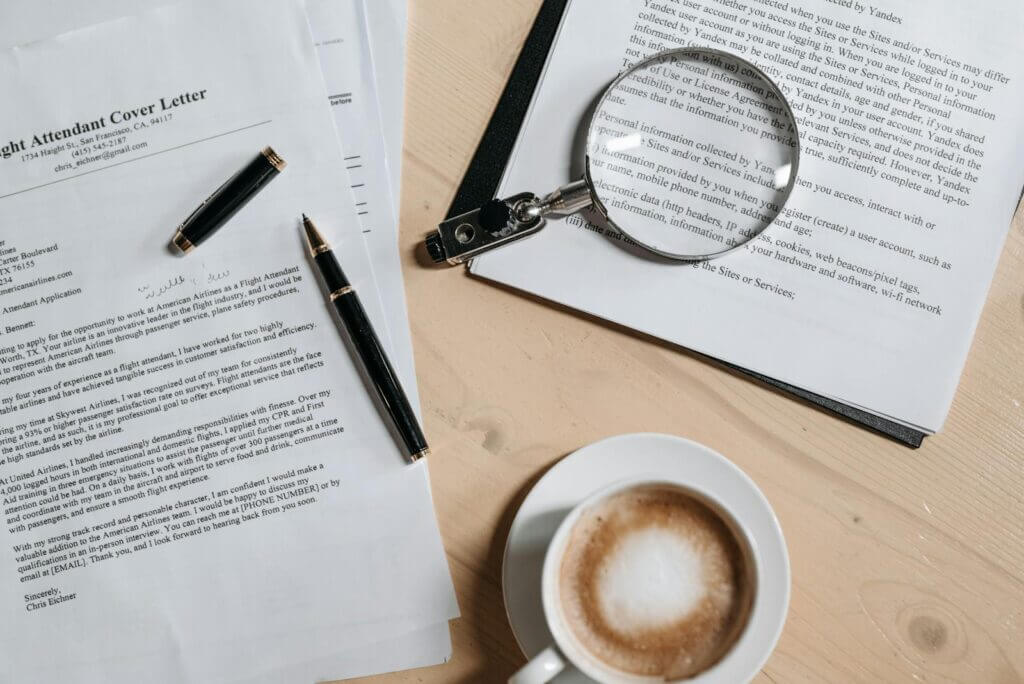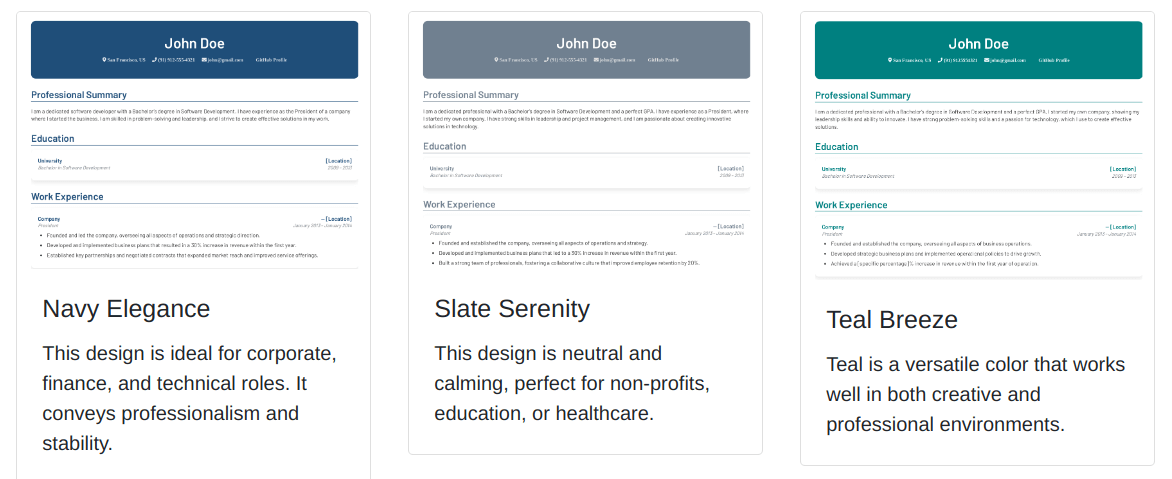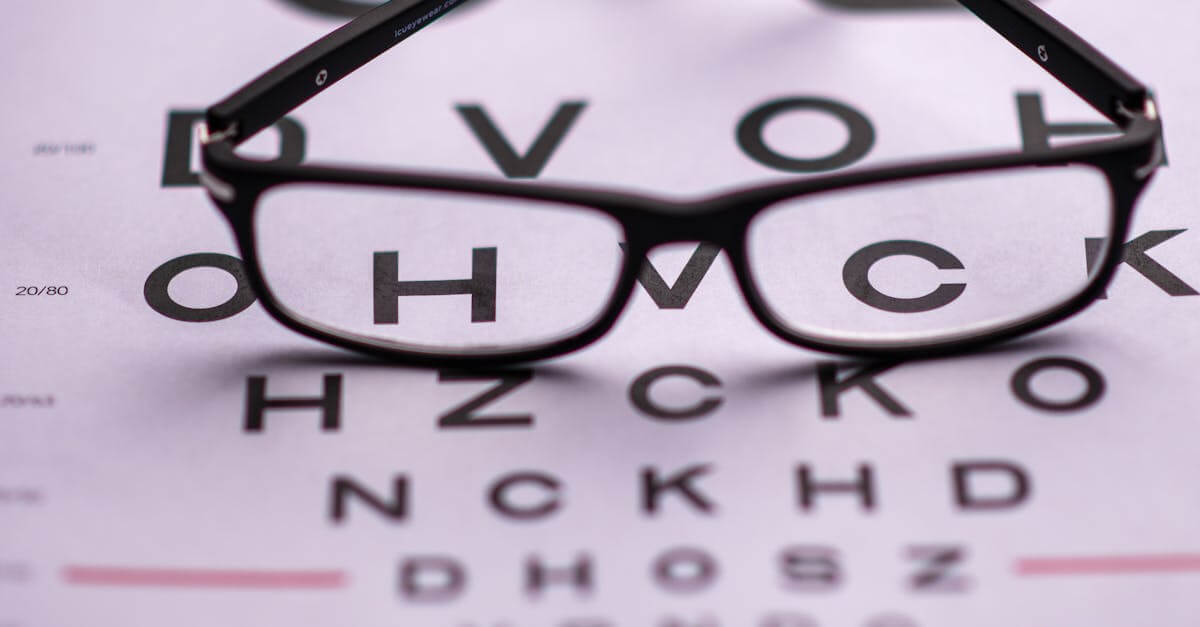Are you looking for Teaching Cover Letter Examples?
Picture yourself standing out among a sea of applicants, all vying for that coveted teaching position, this is where a cover letter comes in. Your cover letter is your first chance to make a lasting impression, and it needs to reflect not just your qualifications but also your passion for education.
Writing a compelling cover letter may feel unnecessary, but it’s your opportunity to tell your unique story and show your passion for the teaching profession.
In this guide, we will look at a variety of teaching cover letter examples tailored to different roles and experience levels, whether you’re a seasoned educator or just starting your career, the tips and examples here will help you create a narrative that resonates with hiring managers and showcases your dedication to inspiring the next generation.

Importance of a Strong Teaching Cover Letter
A strong teaching cover letter plays a critical role during the hiring process. It acts as a writing sample that introduces your qualifications and enthusiasm for the position, persuading hiring committees of your fit for their educational environment. A compelling cover letter leads to an interview opportunity, which can have a direct impact on your career trajectory.
When applying to teaching jobs, you should tailor each cover letter to the specific school and district, this shows your genuine interest in the position and proves you did some research about the school’s mission statement and how it aligns with your teaching philosophy. This personalization sets you apart from other applicants.
Components of an Effective Teacher Cover Letter
Your cover letter should consist of three to four concise paragraphs, typically not exceeding one page. Each paragraph serves a purpose:
- Personalized Greeting: Address the hiring committee by name. This simple act reflects thorough research and respect for their role.
- Engaging Introduction: Clearly express your excitement about the position. Mention particular programs or initiatives that resonate with you, illustrating a strong connection to the school’s values.
- Relevant Experience: Highlight specific achievements and teaching experiences that benefited students, using quantifiable results when possible. For example, if you increased student engagement through differentiated instruction, include statistics that support your results.
- Classroom Management Techniques: Provide examples of your classroom management approach. Explain how your strategies contribute to a positive learning environment, demonstrating your readiness to foster such an atmosphere.
- Closing Statement: End with an assertive yet approachable closing statement. Reiterate your enthusiasm for the opportunity and express eagerness to discuss your qualifications further. A confident closing not only makes a strong impression but also reinforces your commitment to the teaching profession.
Key Components of Teacher Cover Letters
A teaching cover letter showcases your qualifications, passion, and fit for a specific school and position. Including essential components maximizes the letter’s effectiveness and makes a positive impression on hiring committees.
Academic Qualifications
Highlight your academic background relevant to the teaching position, and mention your degree or degrees in education or the specific subject area. For instance, if you’re applying for an English teaching position, emphasize your degree in English or a related field. Include certifications, such as a teaching certificate, ESL endorsement, or specialized training in special education, demonstrating your commitment to professional development.
Relevant Teaching Experience
Detail your relevant teaching experiences, including any student teaching, internships, or full-time positions. Provide specific examples that illustrate your contributions in the classroom. State the grade levels you taught, subject areas, and the number of students involved. For example, “I led English instruction for 23 third-graders, developing engaging lessons that addressed diverse learners’ needs.” Quantify your achievements where applicable, such as improvements in student performance or successful program implementations.
Skills and Achievements
Focus on key skills and achievements that set you apart. Include classroom management techniques, curriculum development methods, or technology integration strategies. Give concise examples that demonstrate your effectiveness as an educator.
For example, “I initiated a cross-curricular project-based learning program, resulting in a 20% increase in standardized test scores among my students.” Highlighting accomplishments not only shows your qualifications but also reflects your capacity to positively impact a classroom environment.
Tips for Crafting an Effective Cover Letter
Crafting an effective cover letter enhances your chances of making a strong impression on hiring committees. Following specific guidelines ensures your letter stands out and reflects your qualifications and passion for teaching.

Tailor Your Letter to the Job
Tailoring your letter to a specific job is crucial, this step could make or mar your whole application. Research the school and district, and identify key values or needs they emphasize. For example, if a school highlights inclusivity, mention your experiences supporting diverse learners, this approach demonstrates genuine interest and commitment, making it evident you understand the school’s mission.
You can use tools such as ResumeSet Cover Letter Writer to tailor your cover letters to any job advert.
Keeping It Concise and Clear
Keeping your cover letter concise improves readability, you should aim for 3-4 paragraphs and limit your letter to one page. Stick to the main points that matter most, use clear language and avoid jargon. For instance, instead of lengthy descriptions, choose a few impactful sentences that highlight your qualifications and teaching philosophy.
Highlight Your Top Skills and Major Achievements
Highlighting your top skills and achievements makes a significant difference in your teaching cover letter; focus on the skills that align with the job description. If you implemented an innovative reading program that boosted student literacy scores by 20%, mention that specific achievement. Use quantifiable results to showcase your effectiveness as an educator. Presenting such data makes your application more compelling.
Proofreading and Formatting
Proofreading and formatting your cover letter ensures professionalism and attention to detail, use the same font and format as your résumé for consistency. Review for grammar and spelling errors, as these mistakes can detract from your message. Having a second pair of eyes can help. Ask a friend or mentor to read your letter; fresh perspectives can catch errors you might miss.
Customize Your Cover Letter for Each Job Application
Customizing your cover letter for each application is vital, even though it requires more effort, generic letters come across as insincere. Make tweaks based on each school’s unique culture and expectations. This strategy communicates that you value the opportunity and are genuinely interested in joining their team, increasing your chances of a positive response.
Teaching Cover Letter Examples
A well-crafted teaching cover letter can significantly enhance your job application, positioning you as a standout candidate. Below are examples tailored for different experience levels and specialized roles.
New Teacher Cover Letter
When you’re just starting your teaching career, highlighting your educational background and relevant experiences can set the tone. Focus on your enthusiasm, ability to learn quickly, and any internships or student teaching experiences. Incorporate specific examples of your philosophy and how it aligns with the school’s mission. Your opening can state:
- “I’m excited to apply for the [Position] at [School Name], where I can bring my commitment to fostering a positive learning environment and enhancing student engagement.”
Dear Hiring Committee,
I am writing to express my strong interest in the Elementary Teacher position at Lincoln Elementary School. As a recent graduate of State University’s Education program with extensive student teaching experience, I am drawn to Lincoln’s commitment to fostering creative thinking and providing individualized support for every student. My teaching philosophy centers on creating an inclusive, dynamic learning environment where students feel safe to take intellectual risks – an approach that aligns perfectly with your mission of nurturing the whole child.
During my year-long student teaching placement at Washington Elementary, I developed and implemented a project-based learning approach that increased student engagement and improved academic outcomes. For example, when teaching a unit on ecosystems, I created an interactive classroom garden where students conducted hands-on experiments and collected data over several weeks. This experience not only deepened their understanding of scientific concepts but also developed their analytical and collaborative skills. The project’s success led my mentor teacher to adopt it for future classes.
Quick to adapt and eager to learn, I actively seek professional development opportunities, including recent workshops on Universal Design for Learning and Social-Emotional Learning strategies. I am confident that my enthusiasm for teaching, student-centered approach, and commitment to continuous improvement make me an excellent candidate for this position. I would welcome the opportunity to discuss how I can contribute to Lincoln Elementary’s mission of nurturing lifelong learners.
Thank you for considering my application. I look forward to speaking with you about this opportunity.
Sincerely,
[Your Name]
Experienced Teacher Cover Letter
For experienced educators, emphasize proven track records and specific achievements. Highlight classroom management techniques, curriculum development contributions, or innovative programs you launched. Your introduction might say:
- “With over [X years] of experience teaching [Subject] at [School/Institution], I bring a wealth of knowledge and a passion for education that aligns perfectly with the goals of [School Name].”
Dear Hiring Committee,
I am writing to express my interest in the Middle School Science position at Roosevelt Academy. With eight years of teaching experience at Oak Ridge Middle School and a proven track record of developing innovative STEM programs, I am excited about the possibility of bringing my expertise to your forward-thinking educational community. Your school’s emphasis on inquiry-based learning and technology integration perfectly aligns with my teaching philosophy and professional achievements.
Throughout my career, I have consistently demonstrated the ability to enhance student engagement and academic performance through innovative teaching methods. I developed and implemented a cross-disciplinary “Science in Action” program that increased standardized test scores by 27% over three years and was subsequently adopted district-wide. This initiative included creating a student-run hydroponics garden that integrated biology, chemistry, and environmental science concepts while teaching real-world problem-solving skills. Additionally, I established an after-school robotics club that has won regional competitions for the past four years, inspiring many students to pursue STEM-related fields.
My commitment to professional growth and leadership has led me to serve as Science Department Chair for the past three years, where I mentored new teachers and led curriculum development initiatives. I spearheaded the implementation of a data-driven assessment system that helped identify and address learning gaps, resulting in a 35% reduction in achievement disparities among diverse student populations. My classroom management approach, which emphasizes positive reinforcement and student accountability, has been recognized by district administrators, who frequently invite other teachers to observe my classes as a model of effective teaching practices.
I look forward to discussing how my experience in curriculum development, technology integration, and student-centered instruction can contribute to Roosevelt Academy’s tradition of academic excellence. Thank you for considering my application.
Sincerely,
[Your Name]
Specialized Roles Cover Letters
If you’re applying for specialized roles, such as an ESL teacher or special education instructor, tailor your letter to reflect your specific skills and expertise in those areas. Highlight what makes you uniquely qualified. Start with:
- “As a certified [Specialization] teacher with [X years] of experience, I possess the skills to create inclusive and adaptive learning environments that meet the diverse needs of students at [School Name].”
Dear Hiring Committee,
As a certified Special Education teacher with six years of experience, I possess the skills to create inclusive and adaptive learning environments that meet the diverse needs of students at Riverside Middle School. Your school’s commitment to differentiated instruction and comprehensive support services aligns perfectly with my expertise in developing personalized learning strategies for students with varying abilities.
My experience includes successfully managing a self-contained classroom for students with moderate to severe disabilities while also providing push-in support for inclusive classrooms. I have developed and implemented over 45 Individualized Education Programs (IEPs), consistently meeting or exceeding student growth objectives through data-driven instruction and behavioral interventions. For example, I introduced a multi-sensory reading program that helped 85% of my students achieve their annual reading goals, with several advancing multiple grade levels in a single academic year. My approach combines evidence-based practices with assistive technology, ensuring each student has the tools they need to succeed.
Throughout my career, I have maintained strong partnerships with General education teachers, specialists, and families to ensure comprehensive support for my students. I pioneered a peer mentoring program that not only improved academic outcomes but also enhanced social skills and classroom inclusion. This initiative was recognized by the district and implemented across multiple schools. Additionally, I hold certifications in Wilson Reading System and Crisis Prevention Intervention (CPI), and regularly participate in professional development to stay current with best practices in special education.
I would welcome the opportunity to discuss how my experience in differentiated instruction, behavior management, and collaborative teaching can contribute to Riverside’s special education program. Thank you for considering my application.
Sincerely,
[Your Name]
Use these examples as templates, personalizing them according to your experiences and the specific role you seek. Tailoring your cover letter can demonstrate your commitment and fit for the educational community, so it increases your chances of securing an interview.
Common Mistakes to Avoid
Avoiding mistakes in your teaching cover letter is crucial for making a positive impression. Here are some common pitfalls to avoid.
Generic Approaches
Each cover letter should reflect your unique attributes and the specific institution you’re targeting, avoid using boilerplate letters that don’t connect personally with the school. Generic content signals a lack of genuine interest in the school, instead, incorporate tailored details like the school’s mission, highlighting how your philosophy aligns with its values. Research the school’s recent achievements or programs, and mention them. This approach showcases your investment in the opportunity.
Overloading Information
Clarity is essential in a cover letter, so keep it concise—overall length should be no more than one page with 3-4 focused paragraphs. Overloading your letter with excessive details can obscure your most significant qualifications, instead identify 2-3 key experiences relevant to the position and provide quantifiable results when possible. For instance, stating that you improved student engagement by 30% through a specific instructional strategy demonstrates impact without overwhelming the reader.
Neglecting to Customize
Customizing your cover letter for each application is vital. A one-size-fits-all approach often results in missed opportunities. Tailor your content based on the specific job listing or unique needs of the school, if a school emphasizes a commitment to diversity, highlight your experience in multicultural classrooms or inclusive teaching strategies.
Tailoring your cover letter not only demonstrates your dedication but also improves the chance of catching the hiring committee’s attention.
Key Takeaways
- Critical Role of Cover Letters: A well-crafted teacher cover letter is vital as it introduces your qualifications and enthusiasm, increasing your chances of an interview and career advancement.
- Personalization is Key: Tailoring your cover letter to match the school’s values and specific position demonstrates genuine interest and sets you apart from generic applicants.
- Structuring Your Content: Use three to four concise paragraphs in your cover letter, including a personalized greeting, engaging introduction, relevant experience, and an effective closing statement to maintain clarity and focus.
- Highlight Your Qualifications: Emphasize your academic credentials, relevant teaching experience, and key skills that align with the job description to showcase your readiness for the role.
- Avoid Common Pitfalls: Steer clear of generic approaches, information overload, and neglecting customization to ensure your cover letter stands out and reflects your unique passion for education.
Conclusion
Crafting a standout teaching cover letter is crucial for making a lasting impression on hiring committees. By personalizing your letter and aligning it with the school’s values you not only showcase your qualifications but also your genuine interest in contributing to their educational community.
Remember to highlight your unique experiences and achievements while keeping your letter concise and engaging. Each application is an opportunity to tell your story so take the time to tailor your approach. With the right strategies in place, you can transform your cover letter into a powerful tool that enhances your chances of landing that teaching position.
Frequently Asked Questions
What is the purpose of a cover letter for teachers?
A cover letter serves as an introduction to your resume, highlighting your qualifications and enthusiasm for teaching. It allows you to share your unique story and demonstrate how you align with the school’s mission and values, making a compelling case for your fit in the educational setting.
How should I start a teaching cover letter?
Begin your cover letter with a personalized greeting that mentions the hiring manager’s name, if possible. Follow this with an engaging introduction that states the position you are applying for and briefly explains why you are excited about the opportunity.
What key components should be included in a teacher cover letter?
Include a personalized greeting, an engaging introduction, relevant experience with quantifiable results, descriptions of classroom management strategies, and a confident closing statement that reiterates your enthusiasm for the position.
How do I tailor my cover letter for a specific teaching job?
Research the school and its values, then customize your cover letter by aligning your skills and experiences with their specific needs. Highlight relevant achievements and express genuine interest in contributing to that particular educational environment.
What common mistakes should I avoid in a teaching cover letter?
Avoid using generic templates that lack personal touches, being overly lengthy or vague, and failing to proofread for errors. Additionally, make sure to customize each cover letter for the specific job to convey authentic interest.
How can I demonstrate my passion for teaching in my cover letter?
Share personal anecdotes or experiences that illustrate your dedication to education. Describe how your teaching philosophy aligns with the school’s mission, and highlight your enthusiasm for contributing to student growth and success.
Should I include certifications in my cover letter?
Yes, mentioning relevant certifications is crucial as they validate your qualifications. List your degrees and certifications to show your preparedness for the teaching role.
How long should a teacher’s cover letter be?
A teacher’s cover letter should typically consist of 3-4 paragraphs and should not exceed one page in length. Conciseness and clarity are key to maintaining the reader’s interest.
Is it important to proofread my teaching cover letter?
Absolutely. Proofreading is essential to ensure grammatical accuracy, clear messaging, and a professional appearance. A well-proofed cover letter reflects your attention to detail and commitment to professionalism.
Can you provide a brief example of a teaching cover letter?
Certainly! “Dear Hiring Manager, I am excited to apply for the 2nd Grade Teacher position at Sunshine Elementary. With a background in Child Development and 3 years of student teaching, I am eager to create a nurturing environment that fosters academic growth. I look forward to the opportunity to contribute to your prestigious institution.“


